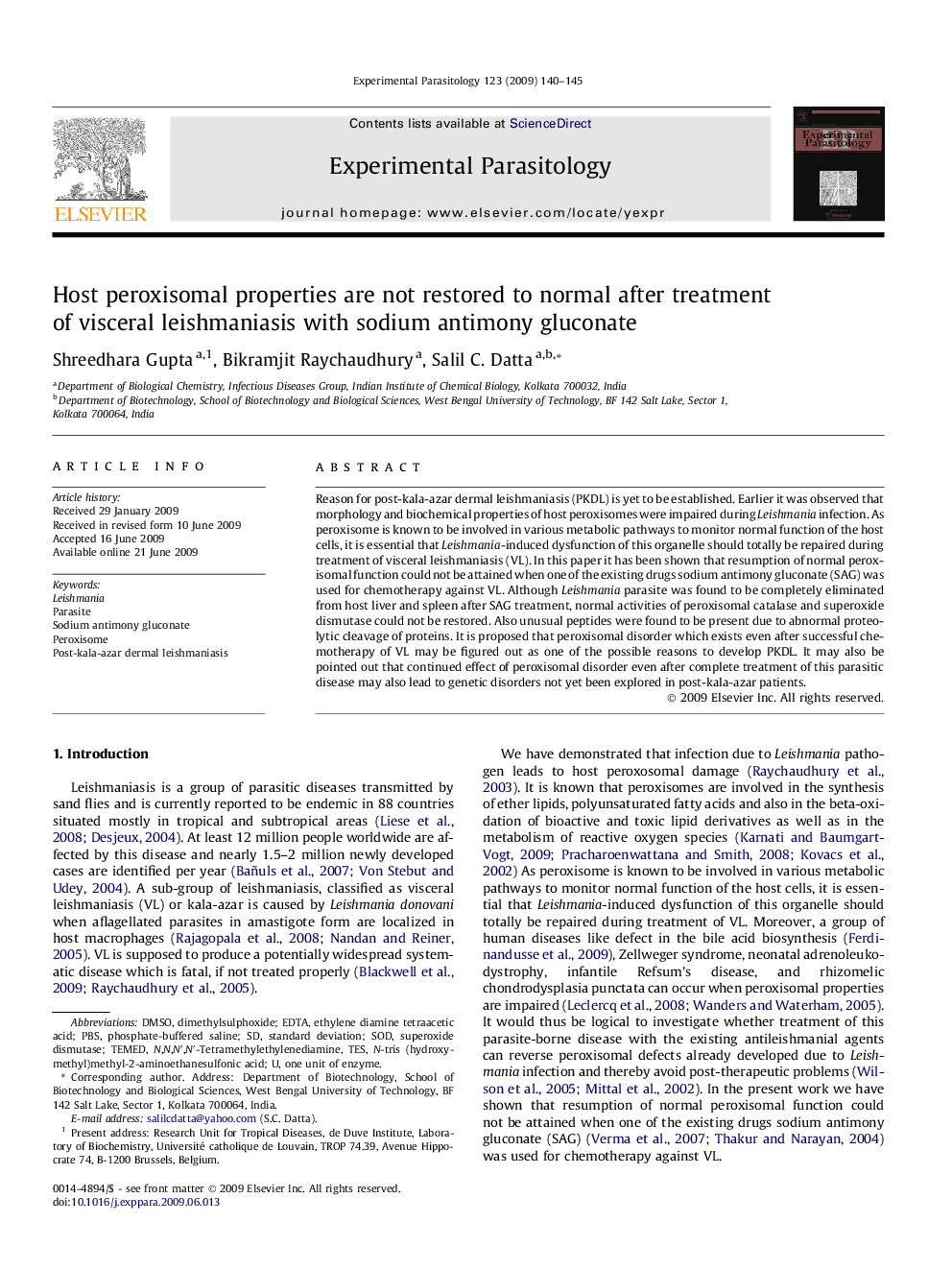| Article ID | Journal | Published Year | Pages | File Type |
|---|---|---|---|---|
| 4371424 | Experimental Parasitology | 2009 | 6 Pages |
Reason for post-kala-azar dermal leishmaniasis (PKDL) is yet to be established. Earlier it was observed that morphology and biochemical properties of host peroxisomes were impaired during Leishmania infection. As peroxisome is known to be involved in various metabolic pathways to monitor normal function of the host cells, it is essential that Leishmania-induced dysfunction of this organelle should totally be repaired during treatment of visceral leishmaniasis (VL). In this paper it has been shown that resumption of normal peroxisomal function could not be attained when one of the existing drugs sodium antimony gluconate (SAG) was used for chemotherapy against VL. Although Leishmania parasite was found to be completely eliminated from host liver and spleen after SAG treatment, normal activities of peroxisomal catalase and superoxide dismutase could not be restored. Also unusual peptides were found to be present due to abnormal proteolytic cleavage of proteins. It is proposed that peroxisomal disorder which exists even after successful chemotherapy of VL may be figured out as one of the possible reasons to develop PKDL. It may also be pointed out that continued effect of peroxisomal disorder even after complete treatment of this parasitic disease may also lead to genetic disorders not yet been explored in post-kala-azar patients.
